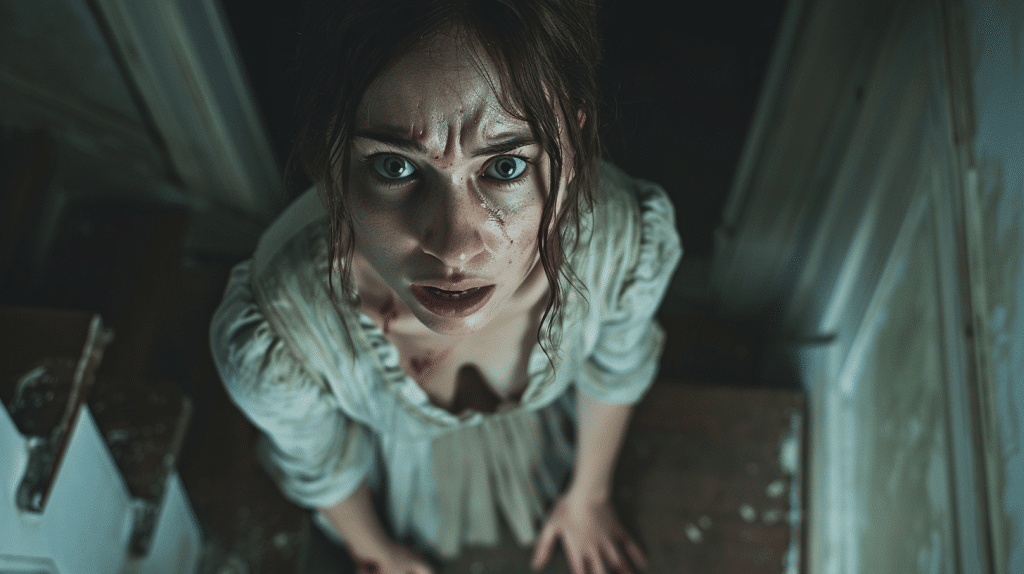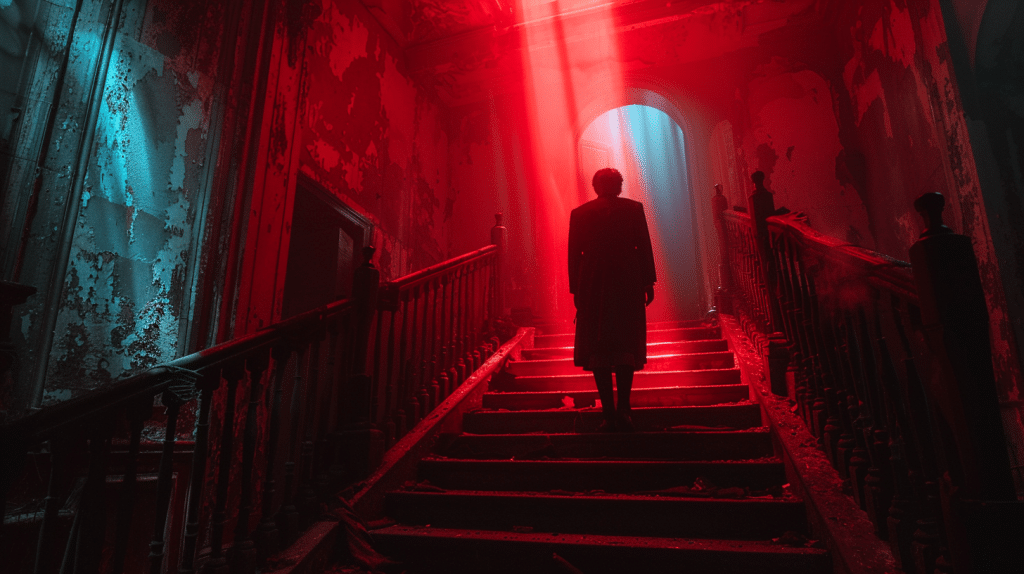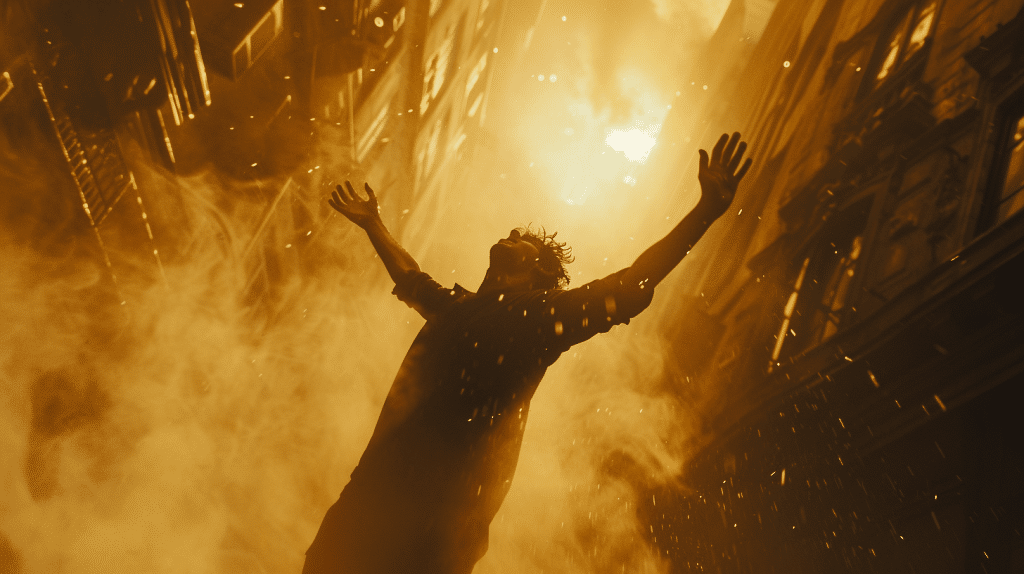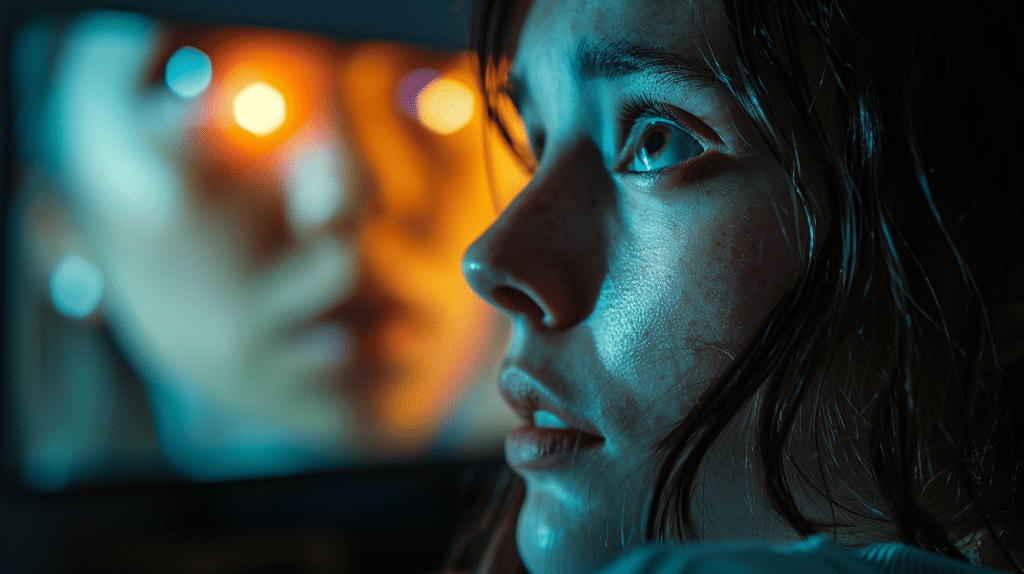What Makes Visual Storytelling So Compelling in Cinematography?

In cinematography, what makes visual storytelling so compelling is the intricate manipulation of color, lighting, camera angles, composition, and symbolism.
These elements work together to provoke emotions, enrich narratives, and captivate audiences deeply.
The deliberate use of warm and cool colors, strategic lighting techniques, creative camera angles, thoughtful composition, and meaningful visual symbolism all contribute to creating an immersive experience that resonates with viewers.
By carefully orchestrating these visual components, cinematographers craft stories that leave a lasting impact and invite you to explore the depth and complexity of cinematic storytelling.
Table of Contents
Use of Color

To enhance the emotional impact of a scene, cinematographers strategically employ color schemes that evoke specific moods and themes.
Colors play an essential role in visual storytelling, as they can convey emotions and messages without the need for words. By manipulating colors, cinematographers can guide the audience’s perception and immerse them deeper into the narrative.
The choice of color palette can greatly influence the mood of a scene. For example, warm colors like reds, oranges, and yellows often evoke feelings of warmth, passion, and energy.
In contrast, cool colors such as blues and greens tend to create a sense of calmness, melancholy, or even mystery. By using these color associations, cinematographers can effectively set the tone for a scene and foreshadow upcoming events.
Moreover, colors can also be used symbolically to represent themes or character traits. For instance, a character dressed in red may symbolize passion or danger, while a character surrounded by blues might represent sadness or isolation.
Through the strategic use of color, cinematographers can add layers of meaning to a scene, enriching the storytelling experience for the audience.
Lighting Techniques

Color plays a significant role in setting the mood and conveying emotions in cinematography; similarly, lighting techniques serve as a pivotal tool in shaping the visual narrative and enhancing the overall storytelling experience.
Lighting is vital in creating atmosphere, directing the viewer’s focus, and evoking specific emotions within a scene. The manipulation of light intensity, direction, and quality can transform a mundane setting into a dramatic or intense moment.
For instance, low-key lighting with strong shadows can convey mystery or danger, while soft, diffused lighting can evoke a sense of romance or tranquility. The contrast between light and shadow can add depth and dimension to characters and settings, emphasizing textures and details that contribute to the narrative.
Additionally, lighting can also symbolize themes or character traits subtly, adding layers of meaning to the story.
Understanding and utilizing different lighting techniques effectively can elevate the visual storytelling in cinematography, enriching the audience’s viewing experience and enhancing the overall impact of the film.
Camera Angles

In cinematography, camera angles play a crucial role in framing shots and influencing the audience’s perspective and emotional response to the visual narrative. The choice of camera angle can completely alter the way a scene is perceived.
Low camera angles, for example, can make characters appear powerful or dominant, while high angles can evoke feelings of vulnerability or weakness.
Extreme angles, such as Dutch angles, can create a sense of unease or disorientation, adding depth to the storytelling.
By strategically selecting camera angles, filmmakers can guide the audience’s focus, emphasize key elements, and create visual interest within the frame.
Moreover, camera angles aren’t just about the physical position of the camera; they also impact the psychological distance between the audience and the characters.
A close-up shot can intensify emotions and build intimacy, whereas a wide shot can establish context and spatial relationships.
Understanding how different camera angles affect storytelling is essential for creating a visually compelling narrative that resonates with viewers on a deeper level.
Composition

By carefully arranging elements within the frame, cinematographers masterfully manipulate composition to convey meaning and enhance visual storytelling in film.
Composition plays a vital role in guiding the viewer’s eye, setting the mood, and emphasizing the relationships between characters and their environment.
One key aspect of composition is the rule of thirds, where the frame is divided into a grid of nine equal sections, helping cinematographers place important elements off-center for a more visually appealing shot.
Additionally, leading lines are often employed to direct the audience’s gaze towards the focal point, creating a sense of depth and movement within the frame.
Moreover, the use of framing techniques such as deep focus or shallow depth of field can influence the audience’s perception of space and intimacy.
Wide shots can establish the setting and context, while close-up shots can evoke emotions and emphasize details.
Furthermore, the positioning of characters in relation to the foreground or background elements can symbolize power dynamics or emotional connections.
Essentially, composition serves as a powerful tool in the cinematographer’s arsenal, allowing them to craft visually compelling narratives that resonate with viewers on a subconscious level.
Visual Symbolism

Utilizing visual symbolism in cinematography enhances the depth of storytelling by imbuing images with layered meanings and thematic significance.
Through the strategic use of symbols, filmmakers can convey complex ideas and emotions to the audience in a visual language that resonates on a subconscious level.
Symbols can range from simple objects like a rose or a key to more abstract concepts such as light and darkness, all of which contribute to the overall narrative of the film.
Visual symbolism serves as a powerful tool for directors to communicate themes, character motivations, and story arcs without relying solely on dialogue.
By incorporating symbols within the composition of a scene, cinematographers can create visual metaphors that deepen the audience’s understanding of the film’s underlying messages.
These symbols can evoke specific emotions, foreshadow events, or provide insight into the inner workings of characters, adding layers of complexity to the storytelling experience.
In essence, visual symbolism in cinematography elevates the art form by inviting viewers to engage with the film on a deeper level, decoding the hidden meanings within the visual tapestry presented on screen.
Mood Setting

Setting the mood in cinematography is a delicate art that establishes the emotional tone of a scene, guiding viewers’ perceptions and reactions throughout the visual narrative.
Here are three pivotal elements in mood setting:
- Lighting: The use of lighting in cinematography plays a pivotal role in setting the mood of a scene. Whether it’s harsh lighting creating a sense of tension and drama or soft, diffused light evoking a feeling of romance or nostalgia, lighting choices have a significant impact on the emotional response of the audience.
- Color Palette: The color scheme employed in a film can profoundly affect the mood. Warm colors like reds and oranges can convey passion or intensity, while cool colors such as blues and greens may evoke calmness or sadness. By carefully selecting a color palette, cinematographers can manipulate the emotional atmosphere of a scene.
- Sound Design: Sound is another powerful tool for setting the mood in cinematography. The choice of music, sound effects, or even silence can amplify the emotional impact of a scene, creating tension, excitement, or melancholy in the audience’s mind. Sound design works in harmony with visual elements to immerse viewers in the intended mood of the story.
Emotion Elicitation

In cinematography, the elicitation of emotions transcends mere visuals and extends into the domain of audience connection, weaving a tapestry of feelings that resonate long after the screen fades to black.
Emotion elicitation in cinematography is a delicate art form that hinges on the ability to evoke genuine and profound feelings from the audience.
Through the interplay of lighting, framing, color palettes, and actor performances, filmmakers can craft scenes that trigger an array of emotions within viewers.
The emotional impact of a film is often heightened through the adept use of visual cues such as close-up shots to convey intimacy or wide-angle shots to evoke a sense of vastness and awe.
Additionally, the manipulation of camera movement and editing techniques can intensify emotional responses, whether it be through a sudden jump cut to instill unease or a slow tracking shot to build tension and anticipation.
Narrative Progression

Narrative progression in cinematography serves as the pivotal force behind the unfolding of a film’s storyline, guiding viewers through a journey of character development and plot twists with strategic pacing and sequencing.
This essential element keeps audiences engaged and invested in the unfolding narrative.
Here are three key aspects of narrative progression that contribute to the compelling nature of visual storytelling in cinematography:
- Pacing: The speed at which events unfold on screen plays a significant role in maintaining audience interest. Whether it’s through fast-paced action sequences or slower, more contemplative moments, the pacing of a film can heighten tension, evoke emotions, and build anticipation.
- Reveals and Twists: Well-executed narrative progression includes skillful reveals and plot twists that keep viewers on the edge of their seats. These unexpected developments not only surprise audiences but also add layers of complexity to the story, prompting them to reevaluate previous assumptions.
- Character Arcs: The evolution of characters throughout a film is intricately tied to narrative progression. As characters face challenges, make decisions, and undergo growth, viewers become emotionally invested in their journeys, forming connections that deepen their engagement with the story.
Audience Engagement

Engaging the audience in a film’s narrative requires a delicate balance of visual and emotional stimuli to captivate their attention and evoke a lasting impact.
Visual storytelling in cinematography isn’t merely about presenting a series of images; it’s about creating an immersive experience that resonates with the viewer on a deeper level.
To achieve this, filmmakers employ various techniques such as framing, lighting, color palette, and camera movement to draw the audience into the story.
Audience engagement is essential for a film’s success, as it’s the audience’s emotional connection that makes a story memorable.
When viewers feel invested in the characters and their journey, they’re more likely to become engrossed in the narrative and empathize with the struggles and triumphs depicted on screen.
This emotional involvement can lead to a heightened sense of connection with the story and its themes, leaving a lasting impression long after the film has ended.
By skillfully weaving visual elements with emotional depth, filmmakers can create a powerful cinematic experience that resonates with audiences on a profound level.
Cinematic Impact

- Visual Composition: The arrangement of elements within the frame plays an essential role in conveying emotions and enhancing the narrative. Every shot should be meticulously composed to evoke specific feelings and guide the audience’s focus.
- Lighting and Color Palette: The strategic use of lighting and color can greatly influence the mood and atmosphere of a scene. By manipulating light intensity, direction, and color tones, cinematographers can create a visual language that speaks volumes without uttering a single word.
- Camera Movement and Angles: Dynamic camera movements and angles can add layers of meaning to a story, intensify emotions, and immerse the audience in the narrative. Whether through a sweeping crane shot or an intimate close-up, the way the camera moves and frames the action can profoundly impact the viewer’s experience.
Frequently Asked Questions

How does color influence the emotional impact of a scene in cinematography?
Color plays a pivotal role in shaping the emotional landscape of a scene. Cinematographers use specific color schemes to evoke certain moods and themes.
For instance, warm colors like reds and yellows can convey warmth, passion, or energy, while cool colors like blues and greens often evoke calmness, melancholy, or mystery.
By carefully selecting and manipulating colors, filmmakers can guide the audience’s emotional response and deepen their immersion in the story.
Additionally, colors can be used symbolically to represent character traits or themes, adding layers of meaning and enhancing the narrative.
What are some common lighting techniques used in cinematography to create mood and atmosphere?
Lighting is essential in cinematography for creating mood and atmosphere.
Low-key lighting, characterized by strong shadows and high contrast, can evoke a sense of mystery or danger, while soft, diffused lighting can create a romantic or tranquil mood.
High-key lighting, which is bright and even, often conveys a cheerful or upbeat atmosphere.
Cinematographers also use practical lighting, where light sources within the scene itself, like lamps or candles, contribute to the visual and emotional tone. By skillfully manipulating light intensity, direction, and quality, filmmakers can transform a scene’s ambiance and enhance its storytelling power.
How do camera angles affect the perception of characters and events in a film?
Camera angles significantly impact how audiences perceive characters and events.
A low camera angle can make a character appear powerful and dominant, while a high angle can make them seem vulnerable or insignificant.
Extreme angles, such as Dutch angles, can create a sense of unease or disorientation.
Close-up shots intensify emotions and build intimacy, allowing viewers to connect deeply with characters.
Conversely, wide shots provide context and establish spatial relationships.
By carefully choosing camera angles, cinematographers guide the audience’s focus, influence their emotional response, and add visual interest to the narrative.
What role does composition play in enhancing visual storytelling in cinematography?
Composition is crucial in visual storytelling, as it determines how elements are arranged within the frame.
Techniques like the rule of thirds, where the frame is divided into nine equal sections, help place important elements off-center for a more dynamic and appealing shot.
Leading lines direct the viewer’s gaze towards the focal point, creating a sense of depth and movement.
Additionally, the use of framing, such as deep focus or shallow depth of field, influences the audience’s perception of space and intimacy.
Through thoughtful composition, cinematographers can convey meaning, guide the viewer’s eye, and enhance the overall storytelling experience.
How does visual symbolism enrich the narrative in cinematography?
Visual symbolism adds depth and complexity to a film by imbuing images with layered meanings and thematic significance.
Symbols can be simple objects, like a rose or a key, or more abstract concepts, such as light and darkness.
These symbols convey complex ideas and emotions, often resonating with the audience on a subconscious level. For example, a recurring motif of a broken mirror might symbolize fractured identities or broken relationships.
By incorporating symbolic elements within the visual composition, filmmakers can communicate themes, character motivations, and story arcs without relying solely on dialogue, enriching the audience’s engagement with the film.
Share:
Search our blog:
Follow us on:
